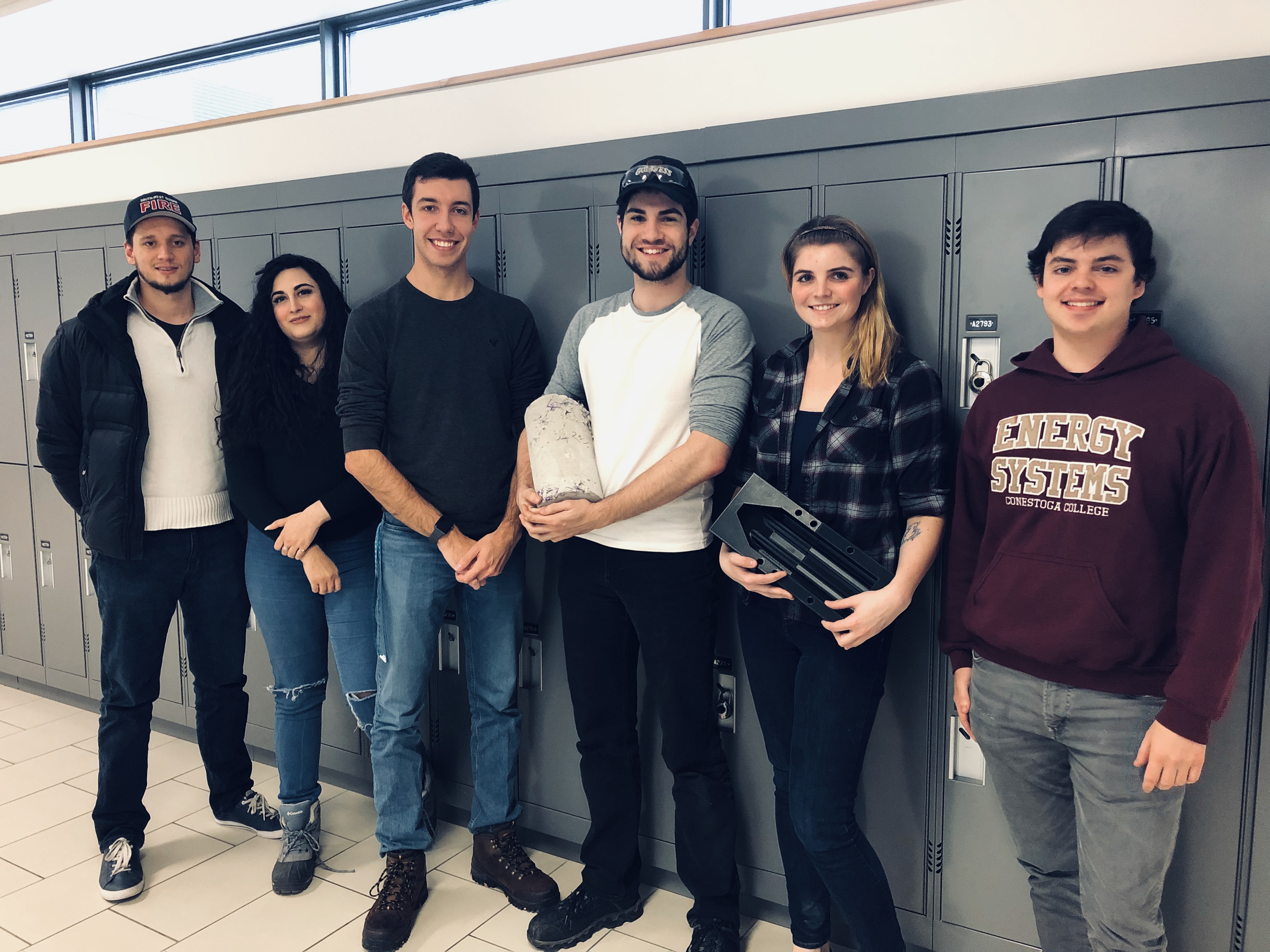Students in Conestoga’s School of Engineering & Technology will compete in the Great Northern Concrete Toboggan Race (GNCTR) as the college’s inaugural team. Hosted this year by the University of Toronto from January 29 to February 2, the event will welcome more than 500 engineering students from over 20 post-secondary institutions across the country.

Conestoga’s inaugural GNCTR team will compete in January. L-R: Wes Bercowski, Gelayel Samii, Thomas Radman, Jordan Raposo, Stephanie Holtz and Matthew Campbell-Milner
A multidisciplinary challenge, GNCTR is the largest and longest running engineering design competition in Canada. Teams are required to construct a toboggan weighing less than 300 pounds to safely hold five riders and include a concrete running surface, fully functional steering and braking systems, and an enclosed roll cage for drag, slalom and head-to-head races.
Wes Bercowski, Matthew Campbell-Milner, Stephanie Holtz, Leo Joseph, Thomas Radman, Jordan Raposo and Gelayel Samii have been planning and designing their toboggan, called the Millennium ‘Boggan, since February. The team — a mix of Mechanical Systems Engineering (MSE), Architecture - Construction Engineering Technology and Energy Systems Engineering Technology - Electrical students — came together to test their technical abilities.
“This project has allowed us to collaboratively apply the skills we’ve learned in our different programs,” said Radman, an MSE student. “It’s really tested our ability to innovate and design using technologies like 3D printing, testing concrete practices, and even looking for ways to be sustainable through the use of waste materials.”
Sustainability is a major focus for the team. According to MSE student Bercowski, the group was inspired to lead by example after several members toured a landfill with the Region of Waterloo.
“This build is about innovation and technology and how we can use it to limit our footprint,” said Bercowski. “One measure we’ve taken is replacing the traditional rebar, or reinforcing bar, with high-density polyethylene (HDPE) waste cut into thin strips. Not all concrete requires reinforcement, but if it carries a heavy load, it’s highly recommended to help prevent cracks from tension. Since our concrete skis will be under a lot of stress from not just the weight of the frame and body of the toboggan, but also the riders, mixing HDPE in the concrete will give us the reinforcement we need.”
As part of their challenge activities, the team is also responsible for recruiting and networking with industry partners and local businesses for sponsorships. Students are responsible for securing funding for transportation and accommodations, as well as donations for technical displays, props and safety gear.
The DENSO North America Foundation has partly funded the project through support extended to the college’s student engineering competition teams. In July 2019, Conestoga’s Condor Motorsports Formula SAE, GNTCR and Baja race teams were supported for the academic year with a $56,000 donation. Since 2008, the foundation has directed more than $201,000 to the Conestoga teams.
For more information on sponsorship, contact Conestoga’s GNTCR team.
The School of Engineering & Technology offers a comprehensive suite of programs with a wide range of credentials. Conestoga is the only college in Ontario to offer fully accredited engineering degrees. Programs feature project-based learning, co-op work experience and applied research opportunities to prepare graduates for success in their chosen fields.
